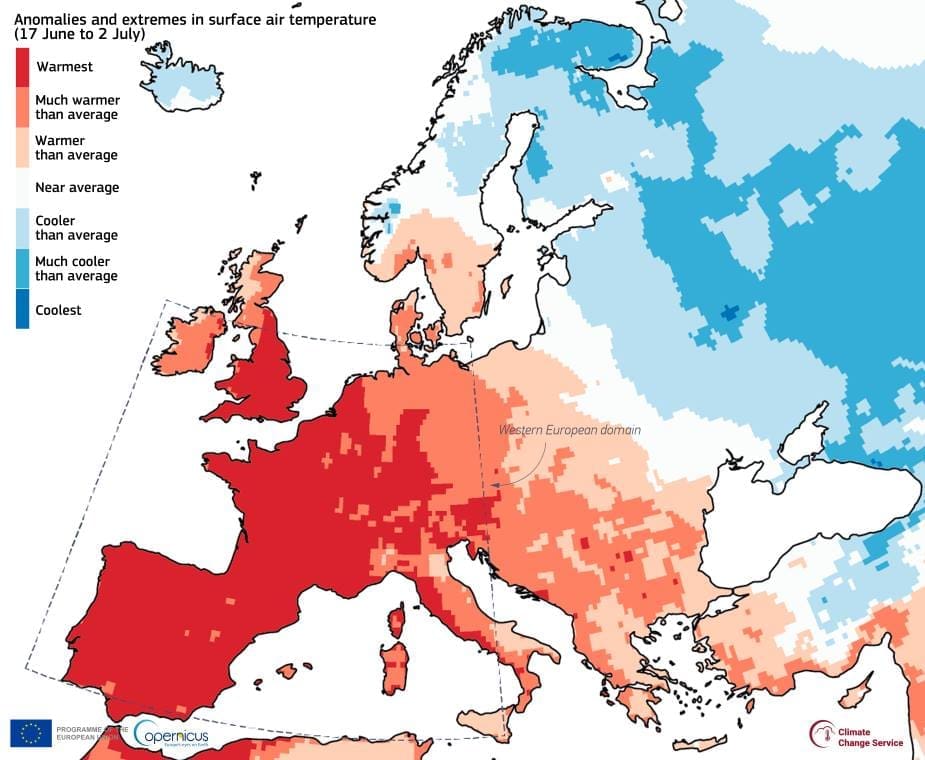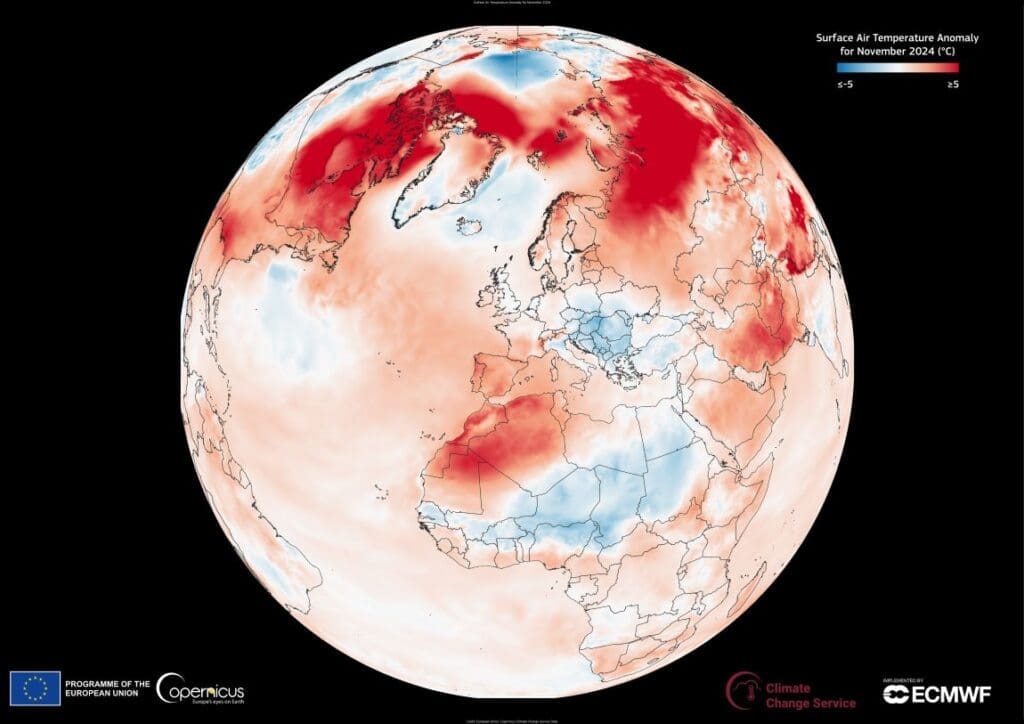Western Europe endured its warmest June on record in 2025, with temperatures driven to extreme levels by back-to-back heatwaves and unusually warm seas. Data from the Copernicus Climate Change Service (C3S) show the region’s average surface air temperature reached 20.49°C during the month – 2.81°C above the 1991–2020 average and surpassing the previous June record set in 2003 by a narrow margin of 0.06°C.
The spike in heat coincided with two major heatwaves that swept across the continent in mid- and late June. The first wave peaked between 17 and 22 June, affecting much of western and southern Europe. The second intensified between 30 June and 2 July, bringing surface air temperatures above 40°C in many countries and up to 46°C in parts of Spain and Portugal. These events were fuelled by persistent high-pressure systems, or ‘heat domes’, that trapped warm air and prolonged hot, dry, and sunny weather conditions. The same systems contributed to spikes in ozone pollution and increased wildfire risk.
This data visualisation, produced using ERA5 reanalysis data from C3S, shows how the average surface air temperature across Europe between 17 June and 2 July compared to the same period in each year since 1979.

On both 30 June and 1 July, average daily temperatures across western Europe reached 24.9°C – the highest June values ever recorded in the region. Only a handful of summer days between mid-July and mid-August in previous extreme years, such as 2003 or 2019, have seen similar readings. According to C3S, the 16-day period from 17 June to 2 July was the hottest on record for that time of year in most of western Europe, including Spain, Portugal, France, and the UK.
Across the wider continent, June 2025 ranked as the fifth-warmest June on record, with an average temperature of 18.46°C – 1.10°C above the 1991–2020 average. Globally, it was the third-warmest June ever observed, with a global average surface air temperature of 16.46°C.
Beyond the air temperature spikes, Europe also experienced record-high “feels-like” temperatures due to humidity. Many regions, including Spain, Portugal, France, Italy, and parts of the Balkans, saw sustained periods of very strong or even extreme heat stress. Northeast of Lisbon, maximum feels-like temperatures reached 48°C – about 7°C above the typical June maximum. Much of southern Europe also saw a surge in tropical nights, where minimum temperatures remained above 20°C. Coastal Spain recorded up to 24 such nights – 18 more than the June average – while Mediterranean coastal areas logged 10 to 15.
The heat was amplified by marine conditions. Sea surface temperatures in the western Mediterranean rose dramatically in June, triggering a marine heatwave. The Gulf of Lion and the Ligurian Sea recorded SSTs above 28°C – over 5°C above average. On 30 June, average SSTs in the region peaked at 27.0°C, setting a new June record. That day’s anomaly, 3.7°C above normal, was the largest daily deviation ever observed in the basin for any month.
These warmer seas disrupted typical nighttime cooling along coastlines and increased humidity, compounding the health risks. They also posed threats to marine ecosystems, with potential consequences for fisheries and aquaculture due to reduced oxygen levels in coastal waters.
Featured image credit: European Union, Copernicus Climate Change Service Data



